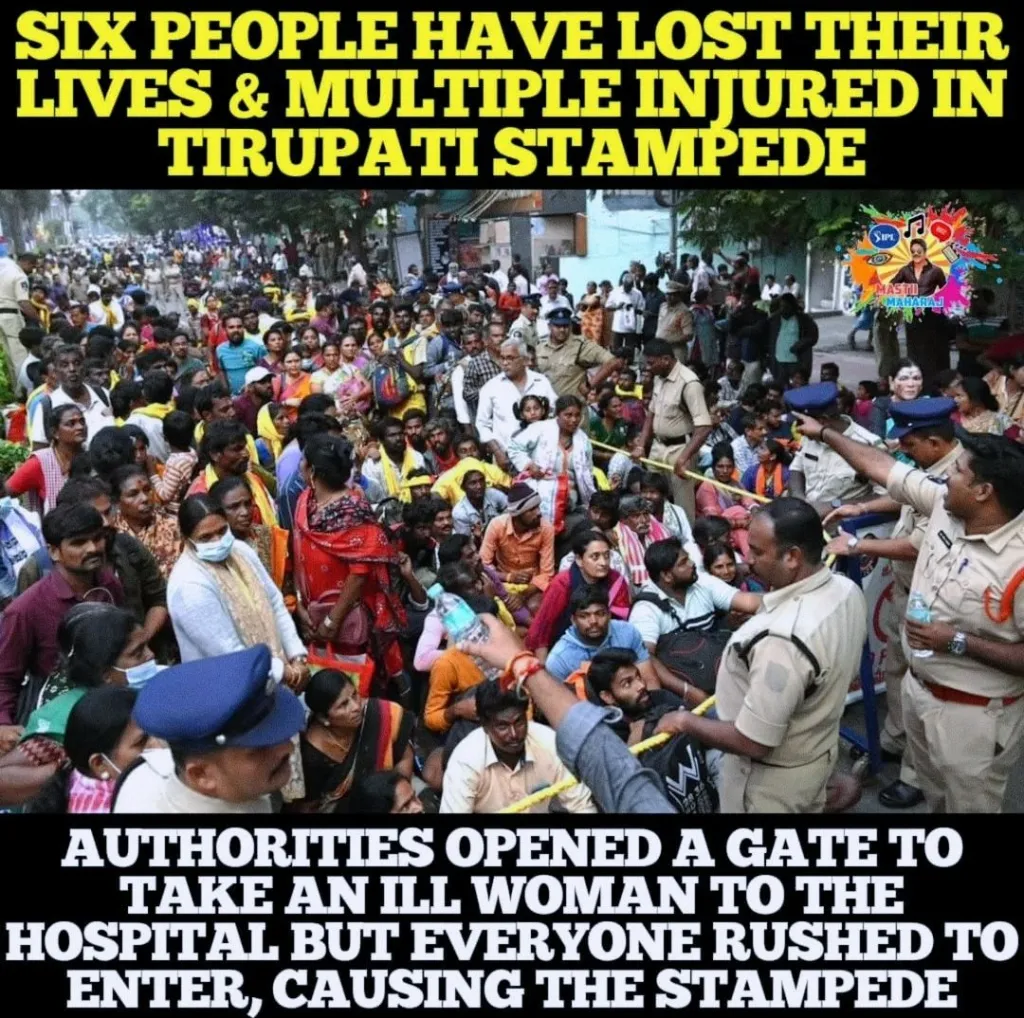Unpacking the Psychological Turmoil Where Devotion Collides with Desperation in the Pursuit of Freedom
The recent stampede in Tirupati has left a heavy toll on families and communities, rattling the hearts of those who experienced the tragedy firsthand. This incident serves as a poignant reminder of the challenges inherent in managing large crowds, particularly during significant religious events like Vaikunta Ekadasi. It is crucial to clarify that the stampede did not occur within the sacred grounds of the Tirumala Temple but instead unfolded in the bustling town of Tirupati, emphasizing the complexities faced by local authorities who oversee such monumental gatherings.
At the core of the stampede lies a deeply embedded belief among the pilgrims: that entering the temple of Lord Venkateswara through the North Gate on Vaikunta Ekadasi can lead to moksha, or liberation from the cycle of rebirth. This powerful conviction ignites an almost uncontrollable desire among devotees to participate in the ritual, creating an urgency that often overshadows rational considerations regarding safety and order. The psychological dynamics at play, such as confirmation bias, further complicate this situation. Pilgrims tend to seek out information that reinforces their beliefs, ignoring contradictory insights. The ritual is not merely viewed as beneficial but essential for their spiritual journey, which can lead to a dangerous disregard for their safety and the welfare of those around them.

This fervent mindset is exacerbated by contemporary social dynamics tailored by digital interactions, especially through social media platforms. In today’s connected world, these platforms can serve as echo chambers, magnifying shared sentiments and experiences that intensify the urgency felt by individuals striving for spiritual fulfillment. As these beliefs gain traction, the drive to achieve spiritual goals can increasingly overshadow individual safety, potentially leading to disastrous outcomes. The psychological strain wrought by communal pressures can redirect focus from personal and collective safety to fulfilling spiritual ambitions, contributing to an environment ripe for chaos.
In retrospect, this tragedy also highlights the phenomenon known as the overconfidence effect, particularly among the local staff of the Tirumala Tirupati Devasthanam (TTD) and local authorities. Having successfully managed substantial crowds at previous events like the Brahmotsavam, there may have developed an overreliance on established strategies. Although the Executive Officer laid out comprehensive plans for crowd control in Tirumala, this solid groundwork was undermined by an apparent miscalculation and complacency among local authorities in Tirupati.

When the stampede erupted, it became painfully evident that local officials underestimated not only the crowd’s emotions but also the intensity of the urgency driving those gathered. The event attracted around 2,500 pilgrims, a number that might have seemed manageable initially. However, the lack of proper communication and coordination between TTD personnel and local law enforcement set the stage for catastrophe. The focus needed to be on managing the immediate needs of those congregating at the Vishnu Nivasam ticket distribution area but was instead lost amid efforts to oversee the larger crowd in Tirumala.
This unfortunate breakdown in operations can often stem from authority bias, where those in positions of power unintentionally stifle feedback or concerns from subordinates. Those working in such environments may feel compelled to conform to perceived expectations, resulting in a lack of critical discussions regarding potential hazards or improvements to procedures. This echo chamber effect can lead to dangerous lapses in management practices and safety measures when handling high-stakes situations like large crowds.
Moreover, examining the media’s role reveals how narratives can shape public perception of such incidents. Sensationalized accounts tend to oversimplify the reality, propagating misconceptions about the stampede. Many reports inaccurately characterized the event as a failure of temple authorities, overlooking that the chaos unfolded in the town of Tirupati rather than the temple grounds themselves. This distortion not only misrepresents the actual circumstances but also diminishes the commendable efforts of TTD officials who have generally been effective in managing crowds during prior events.
The emotional weight of the disaster is amplified by these media narratives, complicating public understanding. Stories that evoke strong emotional responses usually become predominant, while nuanced details fade into the background. Consequently, discussions following the tragedy might lean toward pinpointing blame rather than exploring constructive solutions to prevent such incidents in the future.
As we analyze the psychological undercurrents surrounding this tragic event, it becomes clear that a complex interplay of devout beliefs, overconfidence, and media representations collectively contributed to the calamity. The mentality of the pilgrims, deeply driven by their spiritual aspirations, created an environment susceptible to disorder, revealing a pressing need for vigilant risk assessments and proactive crowd management strategies among local authorities.
The commitment demonstrated by the TTD Executive Officer toward ensuring the safety of pilgrims is commendable, yet this incident serves as a sobering reminder of the fragility of such measures. It illustrates how even the most diligent efforts can be compromised by communication gaps and coordination failures at various levels of staffing.
In the aftermath of this heartbreaking incident, it is paramount to reflect on the systemic issues that allowed it to occur. We must recognize the urgent need for improved training, communication, and cooperative strategies among all stakeholders involved in organizing major religious events. By addressing these challenges, we can aspire to create safer environments for pilgrims, thereby safeguarding the essence and sanctity of their spiritual journeys.

As we navigate the consequences of the stampede, it is our collective responsibility to ensure that the lessons learned lead to real change in crowd management practices. The safety and well-being of devotees should take precedence, and it is vital that we unite to prevent similar occurrences in the future. Preserving the sanctity of revered pilgrimage sites like Tirupati is essential, allowing devotees to pursue their spiritual aspirations with confidence and peace of mind.

